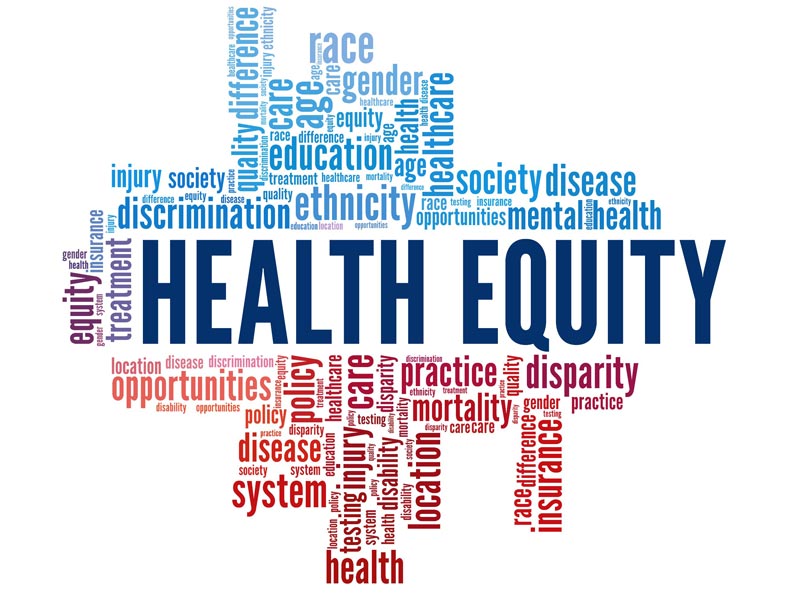CMS Health Disparities, Equity Framework Reflects AAFP Efforts
August 3, 2022, 9:40 a.m. News Staff — In 1985, HHS published a landmark report on the state of Black and minority health in the United States that found while “tremendous strides have been made in improving the health and longevity of the American people,” there remained “a persistent, distressing disparity in key health indicators among certain subgroups of the population” that resulted in some 60,000 excess deaths each year.

Nearly 36 years later, President Joe Biden issued the first in a series of executive orders and memoranda aimed, among other things, at advancing racial equity and support for underserved communities throughout the country, including action to improve health equity.
As part of the administration’s ongoing efforts, in July the CMS Office of Minority Health released the CMS Framework for Health Equity to address health disparities across all aspects of its work over the next 10 years.
“I am excited to see CMS continuing on the journey to advance health equity and reduce health disparities,” said Margot Savoy, M.D., M.P.H., the Academy’s senior vice president for education, who also oversees the AAFP’s Center for Diversity and Health Equity. “This updated framework shows a clear path forward and reflects the feedback AAFP and others have shared about how we can partner together to improve our community’s care.”
At a Glance
The 40-page framework expands on a 2015 plan for improving quality in Medicare to now include all CMS programs, including Medicaid, CHIP and the health insurance marketplaces.
Story Highlights
The framework has five priorities for improving health equity and reducing health disparities:
- Expand the collection, reporting and analysis of standardized, voluntarily provided data — including social risk factors, experience of care and demographic information — for quality improvement.
- Assess causes of disparities in CMS programs, address inequities in policies and operations, and examine how programs impact health equity to develop solutions based on the communities and settings in which they function.
- Build the capacity of health care organizations and the workforce to reduce disparities, taking into account factors that increase capacity among health care professionals, health care plans and other organizations.
- Advance language access, health literacy and the provision of culturally tailored services.
- Increase all forms of accessibility to health care services and coverage, and better understand the effect of barriers to the provision of health care services and coverage.
The framework points out that integrating and implementing the priorities will be key to eliminating barriers to health equity, and notes that the process will require continuous input from communities, health care professionals, health care plans and others.
CMS has an ambitious definition for success: attainment of “their highest level of health and well-being” by everyone the agency serves, and the elimination of disparities in health care quality and access.
“While this vision may not be fully attainable in the 10-year horizon of this plan, we will report on our progress and continually identify opportunities to improve,” the framework states.
Family Physician Perspective
Savoy told AAFP News that she envisions both the Academy and individual family physicians playing crucial roles in helping to achieve the framework’s priorities.
“The Academy has the opportunity to continue as a bidirectional liaison, partner and stakeholder with CMS,” Savoy said. “Not only do we have the ability to bring forward the challenges and successes experienced by our nearly 130,000 members to CMS, but we also have the ability to bring back tangible ways to engage and expand access at a local level to our frontline physicians.
“Family physicians already deliver care to the most vulnerable populations around the country,” Savoy continued. “That frontline experience and insight can help CMS identify where the pain points are and help remove unnecessary barriers that widen or encourage health disparities. Continuing to participate in CMS plans and programs, sharing key messages and opportunities with patients and providing input and feedback to CMS are all straightforward ways for individual family physicians to be involved.”
Savoy also saw tangible connections between the framework and the Academy’s ongoing health equity efforts.
“The AAFP continues to work toward improving the health of all people though a variety of coordinated efforts, from government and policy to practical evidence-based education and practice resources. One great example is The EveryONE Project. We see our work on this project, such as the Health Equity Curricular Toolkit, implicit bias resources and the Guide to Social Needs Screening as great examples of how family physicians are already actively engaged in the work of creating equitable medical homes.”
Additionally, Savoy noted some aspects of the framework that could use more clarity and offered suggestions for individual FPs and organizations to address the effects of racism on health disparities.
“One area the AAFP is actively pursuing that we wished was more clearly reflected in the framework is an intention to embed antiracism as a way to address health disparities and improve equity,” Savoy said. “We believe that as a (health care) system, racism has been institutionalized in a way that permits the establishment of patterns, procedures, practices and policies within organizations that consistently penalize and exploit people because of their race, color, culture or ethnic origin. To that end, we encourage groups seeking to work on health disparities to be intentional about calling out racism as a root cause and creating streams of work that both seek to identify structures that should be eliminated and create those which would promote the inclusiveness we need to make health care accessible to all.”